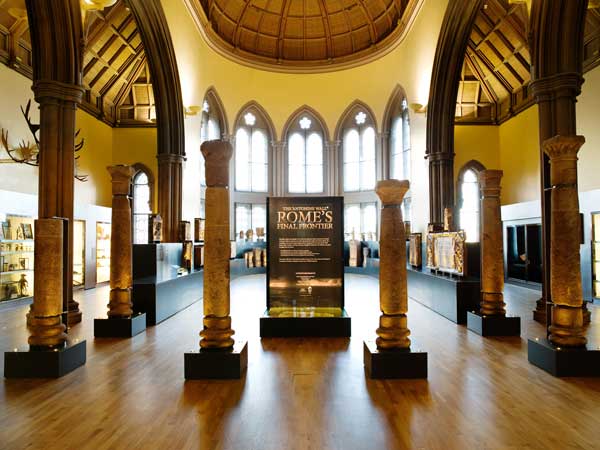The Antonine Wall: Rome's Final Frontier
 Built around AD 142 in the reign of the Roman emperor Antoninus Pius, the Antonine Wall ran coast-to-coast across Scotland from the Clyde to the Firth of Forth. This permanent gallery at the Hunterian Museum showcases the collection of spectacular monumental sculpture and other Roman artefacts recovered from the Wall, including richly sculptured distance slabs, unique to the frontiers of the Roman Empire.
Built around AD 142 in the reign of the Roman emperor Antoninus Pius, the Antonine Wall ran coast-to-coast across Scotland from the Clyde to the Firth of Forth. This permanent gallery at the Hunterian Museum showcases the collection of spectacular monumental sculpture and other Roman artefacts recovered from the Wall, including richly sculptured distance slabs, unique to the frontiers of the Roman Empire.
'The Antonine Wall: Rome's Final Frontier' explores the biography of this important Roman monument and through The Hunterian's rich collections investigates four key themes: The building of the Wall, its architecture and impact on the landscape; the role of the Roman army on the frontier, the life and lifestyle of its soldiers; the cultural interaction between Roman and indigenous peoples, and evidence for local resistance; and the abandonment of the Wall and the story of its rediscovery over the last 350 years.
The display also reflects the story of over three centuries of collecting and research by the University of Glasgow on the World Heritage Site.
VISITOR INFORMATION
'The Antonine Wall: Rome’s Final Frontier' is located in the Hunterian Museum entrance gallery.
Supported by Museums Galleries Scotland.

